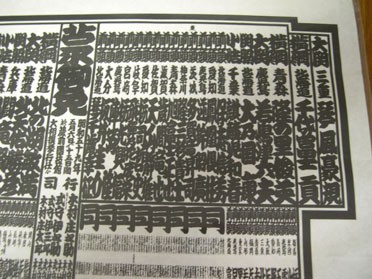| Brothers in Sumo – part two Brian Lewin |

 |
| Yokozuna Comparisons Joe Kuroda |

 |
| Rikishi of Old John Gunning |

 |
| Heya Peek Barbara Ann Klein |

 |
| SFM Interview John Gunning |

 |
| Sumo 101 Barbara Ann Klein |

 |
| Photo Bonanza See the Hatsu Basho |
 |
| Hatsu Basho Review Lon Howard |

 |
| Lower Division Rikishi Mikko Mattila |

 |
| Haru Basho Forecast Pierre Wohlleben & Mark Buckton |

 |
| Kimarite Focus Mikko Mattila |
 |
| Minusha John McTague |
 |
| Online Gaming Alexander Nitschke |

 |
| Kokugi Connections Todd Lambert |

 |
| Fan Debate Feb's debate sees |
 |
SFM Cartoons
Benny Loh & Stephen Thompson
In the third of our cartoon bonanzas, sit back and enjoy BL’s offerings and put a caption to ST’s pic to win yourselves a banzuke
| Let’s Hear From You What was it that |

 |
| Readers’ Letters See what some SFM |

 |
Sumo Quiz
The Quizmaster
Answer the Qs and win yourself next basho’s banzuke.

A banzuke featuring three yokozuna Takanosato, Chiyonofuji and Kitanoumi (photo by Mark Buckton)
Table 2 – Most victories in a single year
| Rikishi | Number of Bouts Won | |
|---|---|---|
| 1. | Asashoryu | 84 (2005) |
| 2. | Kitanoumi | 82 (1978) |
| 3. | Taiho | 81 (1963) |
| 4. | Chiyonofuji | 80 (1985) |
| 4. | Takanohana | 80 (1994, 1995) |
At the 1999 January basho, then-sekiwake Chiyotaikai reached senshuraku one loss
behind the 66th yokozuna Wakanohana (1971- ). Chiyotaikai was facing Wakanohana on senshuraku and managed to defeat him. Following this with a playoff as both were then 13-2, Chiyotaikai beat Wakanohana to capture his first yusho, and with it – ozeki promotion.
Earlier that same basho, a young man from Kochi Prefecture’s Meitoku Gijuku High School, an exchange student named Dolgorsuren Dagvadorj, with a new shikona of Asashoryu Akinori, made his dohyo debut from Wakamatsu- (now Takasago-) beya. He was one of 11 new recruits and three returning rikishi to then enter
Next
select his opponents, but during his seven consecutive winning basho, the other ozeki were either kyujo or in declining health.
So, while one can claim Asashoryu’s opponents to be less capable than those faced by Kitanoumi or Taiho, the point is – could he have as easily motivated himself to conquer stronger opponents had they surfaced? Asashoryu’s sumo is as much about mental intensity as physical combat, and I believe he could. After the 2006 January basho senshuraku, Asashoryu commented that he may have lacked a definite goal
records in the previous basho. So in this sense, the past records were important irrespective of when they were set, whether during the two-basho-a year period of the
35th yokozuna Futabayama (1912-1968) or the time of the 4th yokozuna Tanikaze (1750-1795) in the Edo era. Such records became and remain a goal for later yokozuna to achieve.
So, what remains for Asashoryu? Considering this question, it may be an ideal time to pause and compare past yokozuna records with those of the current yokozuna to see how Asashoryu rates against the greats of the past and how far he has to go to surpass them. That said, since it’s statistically
